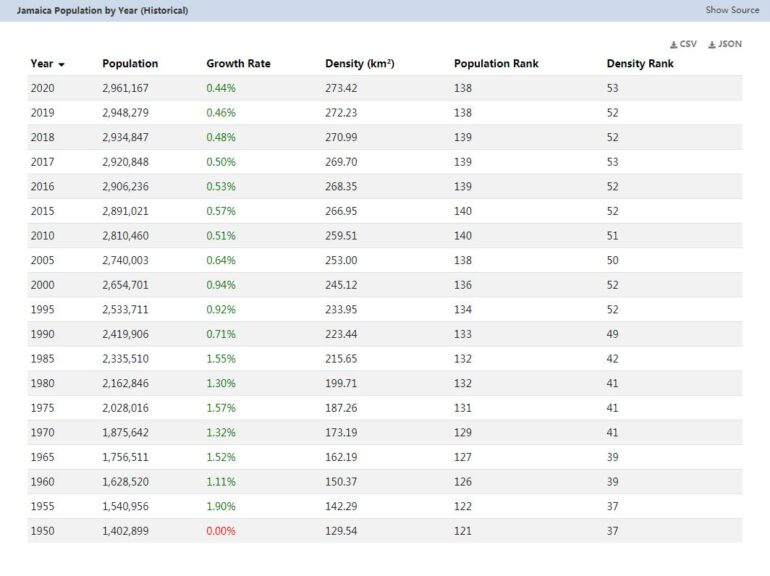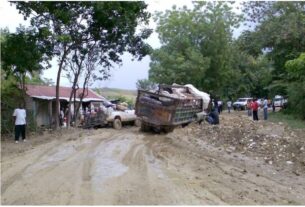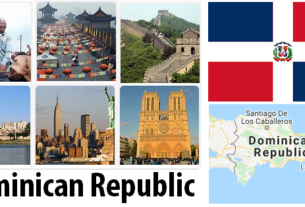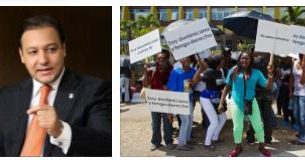It was discovered on May 3, 1494 by Christopher Columbus who called it Santiago, in honor of the patron saint of Spain. But this name was then lost in time and that of Jamaica, which has long since been adopted, probably represents an assonance with the name given to the natives “Xaymaca”, which means “Island of the Springs”, precisely because there are numerous sources in it.
The Europeans who first settled there towards the 1509 settled on the northern coast, and precisely in what is now called St. Ann’s Bay, at the invitation of Diego, son of Columbus, then governor of Haiti.
In 1514 the King of Spain raised the Catholic church of Jamaica to the rank of Abbey and arranged for it to become a marquisate for the firstborn of the Duke of Veragna. See Countryaah for population and country facts about Jamaica.
In 1597 the incursions of the British began on the island who then conquered it definitively on 11 May1655. This takeover was recognized by Spain only in 1670 with the Madrid Peace Treaty.
Lord Windsor was appointed governor, who was discharged shortly after, for allowing pirates to stop on the territory.
In 1673 a similar event occurred when Governor Tommaso Linch sent the pirate Morgan to Maracaibo and Panama, causing protests from the Spanish side.
These were not the only problems that the British had to face: they had as their bitter opponents the Negroes who fled the plantations to take refuge in the interior of the country, due to the exhausting work and the embezzlement they were forced to suffer. These events, which occurred in 1807, continued until 1838 when, finally, a decree was issued declaring all slaves free and the owners were given compensation for the loss of 20 pounds apiece.
This, which had been judged by all to be a very important humanitarian measure, actually condemned the island to a rapid impoverishment as the Negroes, rather than continuing to work freely for the ancient masters, abandoned the plantations and retreated to the interior of the island. Soon there were bitter struggles between the Negroes and the colonists.
In October 1865 the Negroes of Fort Moran rose; Governor Eyre proclaimed the state of siege, fought them and defeated them; then without even bothering a trial, he shot more than 300 of them as they fell under the whip, and were then imprisoned, including women and children.
These evil repressions forced the English Crown to dismiss the governor and insert another one, Sir Enrico
Storke, with the task of adopting more human systems.
In 1866 a new Constitution was proclaimed which greatly improved the situation, creating parliamentary institutions such as a House of 32 Representatives, elected by all adults by universal suffrage; an Upper House and a Council of Ministers. Britain was represented by a governor.
Crops were increased, especially that of sugar cane, which has always represented the greatest resource for the island, together with the famous rum.
The subsoil also contributed with the discoveries of important bauxite deposits.
On January 3, 1958, Jamaica became part of the West Indies Federation, or Caribbean Federation.
The road network and air service intensified; all this in favor of tourism which has been steadily increasing, bringing wealth to the Treasury.
August 6 1962 Jamaica became an independent state within the Commonwealth and became part of the UN and OAS.
The first elections were called on February 21, 1967 and were the prerogative of the Jamaica Labor Party (JLP) and with it went up to the government Sir Alexander Bustamante.
Despite the increase in industries and tourism, with the closure of immigration to Jamaicans by Great Britain, there was a sharp increase in unemployment so that in the elections of February 2, 1972 the Labor party could not remain in the government which instead was hired by Prime Minister M. Manley, head of the PNP, People’s National Party.
The new prime minister immediately triggered a nationalistic policy, hostile to the United States which at that time was accused of exploiting the wealth of the island.
So he tried to reduce the dependence of the Jamaican economy on the United States and began substantial reforms to reduce public spending and to limit imbalances between social classes.




